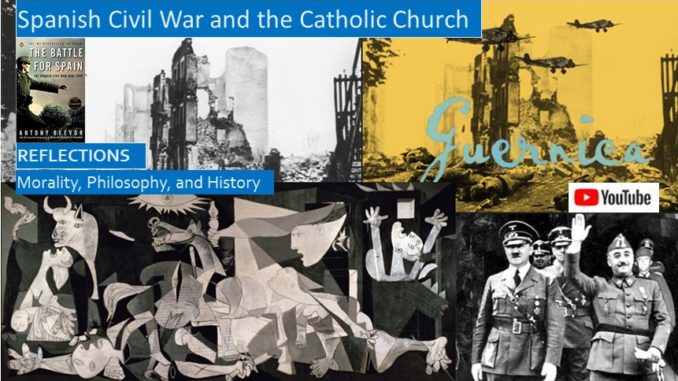
How can so many church goers blindly support Trump although Trump is the antithesis of Christianity? Many Christians who feel alone in their opposition find hope in this editorial of the leading magazine Christianity Today:
https://www.christianitytoday.com/ct/2019/december-web-only/trump-should-be-removed-from-office.html
We have written blogs on why many Catholics and Protestants supported Fascist regimes in Mussolini’s Italy and Vichy France in the World War II era and before, and how also how many German Christians either supported or tacitly tolerated the Nazi regime, enabling and tolerating Hitler’s rise to power and the Nazi German nationalism during his dictatorship. These historical inquiries always lead back to the Spanish Civil War, fought between 1936 and 1939, where the communists persecuted the Catholic Church, systematically murdering many priests, monks and nuns in the regions they controlled. This happened before, after Lenin overthrew the Czar’s government in the Russian Revolution the communists martyred millions of Christians as a matter of state policy. By far, there have been more Christian martyrs in the twentieth century than in the prior nineteen centuries combined. The Pope and many Catholics were very willing to give the Fascist and Nazi parties the benefit of the doubt because the Fascists were enemies of the godless communists. Although Hitler was the enemy of both Catholics and Protestants from the moment he was elevated to the rank of Fuhrer, the Fascist regimes of Italy, Spain and Vichy France openly supported Catholic policies in their countries.
YouTube video for this blog: https://youtu.be/ozEioe6yyY8
We will investigate primarily the history of Catholicism the Spanish Civil War as reported by one of the leading histories of that period. The Spanish Civil War has inspired many other excellent histories available and literary works include Ernest Hemingway’s “For Who the Bells Toll” and George Orwell’s “Homage to Catalonia,” which may be topics for future blogs.
Terminology: In the Spanish Civil War, the socialists and communists were called Republicans, while the rebelling Fascist generals were called Nationalists.
First we need to understand the unique history of Catholicism in the centuries leading up to the Civil War.
PRE-WAR HISTORY OF CATHOLIC CATHOLICISM
The Spanish crown was always a stalwart champion of Catholicism. Spanish Catholicism profoundly influenced medieval Catholicism, both for better and worse, both for Spain and Catholicism. Spain was the only European region that fell to the Muslim armies, the Reconquista struggle to defeat the Muslims, ending in 1492, lasted for seven centuries. This unique struggle helps explain why Spain is unique. Although this was a long and complicated process, often slowed by alliances between local Christian and Muslim rulers, the Reconquista meant that the Spanish nobles were weaker and the monarchy stronger than in other European regions. Also, there were closer ties historically between the Spanish armies and the Catholic Church, which persisted into the age of Spanish colonialism. Since the Reconquista ended shortly before Luther was born, Spain was less affected by the Protestant Reformation.
Spain was economically backward, the Spanish colonial system was more exploitative and less concerned with trade than other European countries. The vast amounts of gold and silver mined in Mexico and Peru and the Catholic prejudice against usury also helped to hinder the development of a Spanish merchant class. Spain was much slower to abandon feudalism where nobles were not only not expected to work, they were derided if they did any productive work. In contrast, the peasant serfs both paid the taxes and performed the back-breaking agricultural tasks to feed the country while living lives of destitution and sometimes starvation. A period joke was that half of Spain eats but does not work, while the other half works but does not eat.
The mountains of the Pyrenees helped to isolate Spain from the rest of Europe, but they did not prevent Napoleon from invading Spain and infecting Spanish society with the liberal ideas of the French Enlightenment and the legal egalitarian legal principles of the Napoleonic Code. Under enlightenment philosophy the development of liberalism led to anti-clerical sentiments in the small but growing middle class, particularly in the reign of the very capable King Charles III half a century after Napoleon.
In the decades after Charles III Spain was less stable politically, between 1814 and 1875 there were 37 attempted military coups, of which a dozen were successful. In 1873 the Spanish monarch abdicated shortly before the short-lived First Spanish Republic, and the House of Savoy were constitutional monarchs from 1874 to 1931, shortly before the Spanish Civil War. The trinity of army, monarchy and Catholic Church presided both over the Spanish Empire and its final collapse after the Spanish American War of 1989 when the young American nation humiliated the Spanish forces in Cuba and the Philippines, ceding both those territories and Puerto Rico to the United States.
Since Spain took longer to evolve away from a feudal agricultural society than the rest of Europe, it was was less prosperous and more backward than its neighbors. Spain was so impoverished that half a million Spaniards from a total population of 18 million emigrated to their former colonies in the New World. Two thirds of Spanish citizens were illiterate agricultural peasants. Church and the landlord class worked together to keep the peasants impoverished, the ballot box and judicial system were rigged to deny justice to the peasant class. Just as in France the “Church” was not monolithic, as the local village priest was just as impoverished as his peasant parishioners, and was more sympathetic to their plight than his superiors. Since Spain was neutral in World War I, these war and post-war years were a welcome period of prosperity for all of Spain due to rising agricultural, raw material, and industrial exports.[1]
SECOND SPANISH REPUBLIC
Although the Great Depression did not affect Spain as much as more developed countries, it did lead to a dramatic fall in exports and economic hardships. The monarchy was tied too closely to the military dictatorship, and King Alfonso XIII abdicated in 1931 soon after the Republicans won the municipal elections that year. Although only five to twenty percent of Spain’s population attended Catholic mass, this anti-clericalism was deeply resented by the traditional Catholic clergy and believers, landowners, and conservative members of the army.
In Spain, the socialists and communists were called Republicans, while the rebelling Fascist generals were called Nationalists. The Spanish Civil War was really two civil wars. One was the larger civil war between the Republicans and the Nationalists. The other civil war was between the Socialists and the Communists, and this conflict helped sparked the larger civil war. In early 1934 the socialist executive committee pushed a program to nationalize all land, dissolve religious orders and seize their property, and dissolve the army, replacing it with a national militia. These proposals strengthened the Bolshevik party over the other socialist parties.
Largo Caballero, a leading socialist, sowed discord when he started encouraging a violent overthrow of the social order by the vanguard of the proletariat and shouting communist mantras while condemning the fascist wolf, which led to a self-fulfilling prophecy when general strikes sometimes coupled with armed revolt were staged in several regions of Spain. The government was forced to declare a state of war against the armed workers, historians estimate that between 15,000 and 30,000 workers participated in these violent uprisings that also took the lives of about forty priests and the wealthy.[2]
SPANISH CIVIL WAR
Compromise in the 1930’s was impossible between the far-left communists and socialists who shouted for violent revolution and the army and Civil Guard who cruelly repressed their protests and rebellions. This guaranteed that the last elections in Franco’s lifetime were held in 1936. The Nationalists refused to support a government that refused to protect the interests of the Catholic Church. Although the leftist parties won the election by a small margin, they acted as if they were handed an electoral mandate for revolutionary change.
The Falange Española, or Spanish Phalanx, the Spanish Fascist Party, was born in a Madrid meeting in 1933 that attracted student, fascist intellectuals, and conservatives from the wealthy and middle class threatened by the radical leftists. The Falange was deeply conservative, supporting the Church and the army and the historical traditions of Spain. Like their fascist counterparts they were eager to battle their leftist enemies in street fighting. Some thought the ideal Falangist was half-monk, half-soldier, like modern Reconquistas.[3]
In hindsight, the Republicans were doomed to lose the Civil War. The Great Stalinist Purge Trials that decimated the officer corps and political and bureaucratic class of Russia occurred at the same time in history, being a lackey of Stalin was valued far more highly than professional competence. This attitude also affected only intensified the inflexible ideology of the far-left in the Spanish Civil War, battles were valued more for their propaganda victories than for their actual military victories. Strategic retreats were ideologically suspect, once you committed troops to a battle you never retreated, you just kept committing more troops until your armies were either victorious or all dead or captured. And after all battles the dead always leave their guns and trucks and tanks behind.
The Republicans always had fewer and older guns and trucks and tanks, Stalin was always stingy and often did not live up to his commitments to supply the Republican armies, stinginess that only increased as the Bolshevik intimidation of the more moderate socialist parties increased. Early in the war the Republicans made the mistake of depositing the government reserves in Moscow, Stalin was quick to oblige but would never account for them. Stalin gained propaganda victories by simply promising aid, and the Western democratic allies were neutral, refusing military aid to both sides. Prime Minister Chamberlains’ policy was to appease the Nazis. In contrast, the Germans and Italians were eager to test and supply weapons to their Fascist friend Franco, as Spain potentially had great strategic importance. The German Luftwaffe pilots were eager to try out their blitzkrieg bombing tactics, while the Russian pilots were far more timid and were less willing to risk defeat, preferring patrols to aggressive combat. Unlike the later Cold War conflicts, in the Spanish Civil War there were few Spanish pilots.
Both sides in the Spanish Civil War were guilty of committing civilian and military massacres. What frightened the Pope and Catholics all over Europe was the Republicans targeted priests and monks and nuns for massacres and sometimes brutal tortures. Since the Nationalists were friends of the Church, they tended to only massacre the priests who served either as chaplains or soldiers in the Republican armies, although sometimes priests simply suspected of firing on troops were also executed. Instead, the Nationalists massacred liberal school teachers. Sometimes the public executions were public events. Also the German Luftwaffe pilots practicing their new blitzkrieg bombing strategies. In the infamous bombing of Guernica the German pilots destroyed a church and then circled back for target practice on those who were fleeing from the church. In the years immediately after the war Franco continued his massacres of Republicans.
Although the Luftwaffe blitzkrieg bombing campaigns of the Spanish Civil War definitely served as practice for the dive-bombing in the Nazi invasions of Poland and France, the Spanish Civil War was really more like the Battle of Stalingrad that helped turned the tide of war in Europe. In both of these conflicts both sides stubbornly fought just viciously for a propaganda victory, never willing to strategically retreat, readily accepting massive military and civilian casualties. The Fascist Nationalists always had a manpower advantage, starting the war with 40,000 battle hardened troops from Morocco and greener 60,000 troops in Spain, in time the Republicans were able to recruit armies whose lack of experience was often overcome by ideological enthusiasm, enthusiasm which faded as the fatalities of war mounted. By late 1937 both sides had between 650,000 and 700,000 troops each.
The most competent Nationalist general was Francisco Franco, although he was quite conservative in his strategic decisions. Many historians speculate that Franco’s battlefield caution was purposeful, more numerous the casualties of war, the fewer are his political opponents after the war. In this Civil War the plodding McClellans were always preferred over the decisive Grants.[4]
THE SPANISH CIVIL WAR GRINDS ON AND ON
Most military coups are quick, either they succeed in a week or two, or they fail. The Spanish Civil War is an outlier, it is the military coup that lasted four bloody years. The coup quickly succeeded in some conservative regions but drug on in Republican regions, including the key capital of Spain, Madrid. Though the Nationalist Falange quickly won over regions bordering Madrid, Madrid itself would not surrender until the dying days of the war.
This was a coup that was attempted in the various regions of Spain by multiple generals. Although most of the Spanish generals and officers were Falange sympathizers, there were some generals loyal to the Republican government, some generals were socialists, some generals sided with the socialists due to local political reasons and the initial failure of the Falangist coup in their region.
Just as there was general anticipation of the initial communist uprising, likewise many also anticipated the Nationalist Falange uprising, there were too many people and publicity involved to keep these political events secret. In the beginning of the war it seemed that much of the Spanish Navy was initially loyal to the Republican government, so the Nazi Luftwaffe did achieve surprise in the first airlift of Spanish Nationalist troops from Spanish Morocco to central Spain. This was also the first coup where the military tried to quickly seize the radio stations, telephone exchanges and airports.
The Falange generals did not anticipate the determination of the union members and many members of the Civil Guard to oppose the coup. Often soldiers were attacked with unexpected furor with homemade weapons and bombs and snipers. The coup was successful in Seville, near Madrid, but there was unexpected resistance in Barcelona, since the unionist movement was strong in the surrounding region of Catalonia.[5] In his book Anthony Beever provides more details on the suffering and atrocities on both sides in chapters titled Red Terror, White Terror, the Nationalist Zone, and the Republican Zone if you want more gory details.
The maps in Wikipedia show that the Nationalists started the war in 1937 controlling more of the territory in the north and west of Spain, bordering Portugal and the Atlantic, while the Republicans controlled Madrid and central and eastern Spain, bordering the Mediterranean Sea. The maps illustrate the slow slogging campaigns of the war. In 1938 the Republican regions were cut in two when the Nationalists a large corridor to the Mediterranean Sea. In 1939 the small Republican Catalonian pocket was captured, while the bulk of the Republican held territories did not collapse until the very end of the war. The estimates of total casualties range from 250,000 to two million, most historians agree they exceeded a million lives.[6]
The Spanish Republicans were the winners in the arena of public opinion and the liberal international press. Early in the war many idealistic young socialists flocked to join the International Brigades to battle the fascists, during the war over 30,000 foreigners from over fifty countries volunteered to serve in these brigades, and most of the foreign press reported from Republican territory. Many foreign socialists, like George Orwell, became disillusioned by the murderous Bolsheviks who struggled to increase their control over all the socialist parties. Orwell came to fear that he was much more likely to shot by communist conspirators than enemy fascist soldiers.[7] When these volunteers tried to return home, they sometimes found they were not allowed to leave, and were sometimes forced to fight senseless blood-letting battles at the point of a pistol. Sometimes socialists who refused to join the communist party were shot. If foreign volunteers were foolish enough to surrender their passports, the passports were often sent to Moscow in diplomatic pouches so Soviet NKVD agents could steal their identity. If the foreign volunteers did manage to escape to their home countries, they were often blacklisted by left-wing publishers if they dared to criticize the Bolsheviks.[8]
TOTAL VICTORY AND FOUNDING THE TOTALITARIAN CATHOLIC STATE
In the beginning of the Civil War, Franco’s constitutional formula was to establish a monarchy without a monarch, with Franco as the ruling strongman. This avoided both the unpopularity of the deposed King Alphonse and establishing a monarch that could later depose him, as King Victor Emmanuel would later depose Mussolini when Sicily was invaded.[9]
In the Spanish Civil War General Franco sought the total destruction of his enemies, the transformation of Spain, turning it back to its traditional Catholic values, and the establishment of a totalitarian regime. When eventual victory became certain in early 1938, Franco formalized the structure of his totalitarian government. While government ministers were bound to swear allegiance to head of state rather than Franco personally. Was this personal allegiance to the leader required of ordinary citizen as it was required in Germany and Italy? My sources are silent on this question.
In Franco’s government the key ministries of defense, public order, and foreign affairs were all controlled by generals. Abolished were the liberties of meeting and public association. The ministries of justice and education were mandated to reverse all Republican legislation related to church affairs and education, crucifixes would once again hang in every Spanish classroom. The new Law of the Press forbade the press from criticizing the government or the prestige of the nation. The official language would be Castilian, Basque or Catalan could no longer be spoken in public.
Also abolished was the pretense of class struggle, to be replaced by a government sponsored association of bosses and workers. Surprisingly, Fuero del Trabajo or Right of Work decree combined Falange political doctrines with the progressive pro-labor papal encyclical Rerum Novarum. This encyclical was the start of the Catholic doctrine of social justice which would also influence the formulation of FDR’s New Deal policies.
The Republicans had foolishly trusted the Spanish foreign reserves to Stalin’s regime, so Franco was forced to mortgage the country’s mineral wealth to pay Germany for its military aid during the war. Hitler was the stricter creditor, Mussolini let Franco slide on his Italian war debts.[10]
THE SPANISH CIVIL WAR FINALLY ENDS
When the Spanish Civil War ended the economy was in ruins, there was massive destruction of railways, roads, bridges, ports, power lines, and telephone systems. Half a million buildings were either destroyed or severely damaged. One of the regime’s first priorities was returning farms and land seized by Republican forces during the war and in the agrarian reforms of the Spanish Republic. Both wages and prices were fixed controlled by the state, strikes were outlawed, and the business profits of owners were limited.
Prison camps were established all over the country, holding close to half a million former Republicans, although executions, suicides and escapes reduced the totals. Although conditions were quite brutal in the prisons and prison camps, my sources suggest that the camp conditions did not approach those in the Nazi death and labor camps in Germany. These prisoners were available to assist in rebuilding the infrastructure destroyed by the war. Only at the end of World War II would Franco pardon the political prisoners of the Spanish Civil War.
Ominously, in 1943 over 12,000 children were forcibly stolen from their Republican mothers and handed to Catholic orphanages for adoption by more politically correct couples. The military dictators of Argentina would copy this practice thirty years later.
Republicans were purged from the schools and universities and were obliged to submit to the authority of the Church and the new state. Neighbors were encouraged to spy on their neighbors, continued vigilance for approved ideology was considered to be patriotic. Women were encouraged to work at home to tend to housework and be always obedient to their husbands. Marxism, the Enlightenment, and Freemasonry had been defeated by the virtuous fascist forces of the Phalange.[11]
FRANCO DECLARES SPANISH NEUTRALITY IN WORLD WAR II
When Hitler invaded Poland in 1939 Franco was quick to declare that Spain would be a neutral nation in the upcoming conflict. The Spanish Civil War had ended only a few months before, Spain was in no condition to fight in another war so soon. After the fall of France Franco hedged his bets, rather being a neutral nation, Spain would now be a “non-belligerent” nation. Franco offered to assist Hitler if Spain’s assistance was needed.
Hitler took him up on his offer, so Franco offered to enter the war on the Axis side. Spain only required generous supplies of arms, fuel, ammunition, food, Morocco, Oran, a large portion of the Sahara, and also some French colonies in Africa, including Guinea.
Hitler saw Franco as a hard bargainer, so he decided to have a personal meeting with Franco on the French frontier. Hitler wanted Franco to seize the strategic British outpost of Gibraltar that guarded the entrance to the Mediterranean Sea, but Franco worried that the British would then seize the Spanish Canary Islands. Afterwards the Franco government sent a detailed list of the military supplies needed if Spain were to enter the war. This wish list of military supplies exceeded the supply capacity of Germany.[12] Hitler confided to Mussolini that he “would rather have four of my teeth pulled rather than have to talk to that man again.”[13]
An interesting question remains: How did the Fascist Falange totalitarian support of the Catholic Church damage the reputation of the Church in the long run? This question is no doubt partially answered by a history of the Catholic Church in Spain through the entire modern era by Stanley Pope, “Spanish Catholicism: An Historical Overview.” How comparable this Spanish Catholic history is comparable to the American experience is hard to say, not to mention how hard it would be for an outsider to truly understand a general religious history. So perhaps this interesting history will be the topic of a future blog.
[1] Anthony Beevor, “The Battle for Spain” (New York: Penguin Books, 1982, 2006), pp. 4-10.
[2] Anthony Beevor, “The Battle for Spain”, pp. 21-33, 263-273.
[3] Anthony Beevor, “The Battle for Spain”, pp. 33-43.
[4] Anthony Beevor, “The Battle for Spain”, pp. 49-50, 69, 133-140, 150-156, 285-286, 303-304, 313-314, 345, 428.
[5] Anthony Beevor, “The Battle for Spain”, pp. 55-80.
[6] https://en.wikipedia.org/wiki/Spanish_Civil_War
[7] Anthony Beevor, “The Battle for Spain”, pp. 157-165, 239-250.
[8] Anthony Beevor, “The Battle for Spain”, pp. 305-308.
[9] Anthony Beevor, “The Battle for Spain”, p. 97.
[10] Anthony Beevor, “The Battle for Spain”, pp. 340-344.
[11] Anthony Beevor, “The Battle for Spain”, pp. 401-409, 418.
[12] Anthony Beevor, “The Battle for Spain”, pp. 413-415.
[13] https://www.historyextra.com/period/second-world-war/hitlers-fury-francos-guile-and-the-bribe-that-saved-the-world/

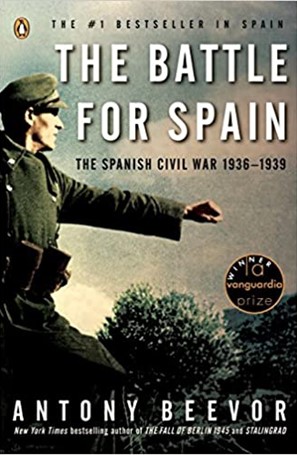
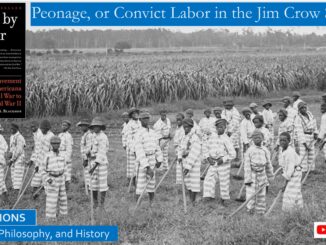
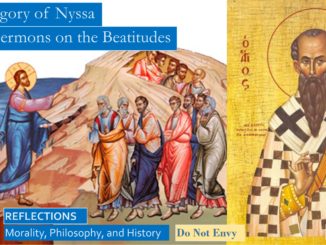
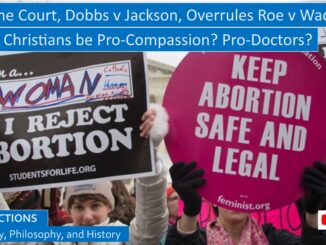
2 Trackbacks / Pingbacks